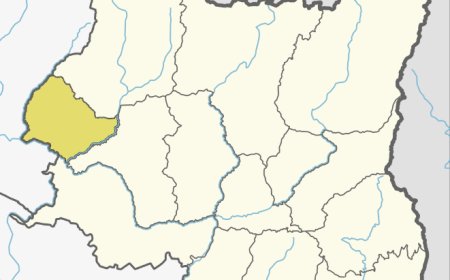The Impact of Remittances on Nepal's Economy: An Analysis of Trends and Challenges
Explore the impact of remittances on Nepal's economy and learn about the trends and challenges facing the country's dependence on money sent home by migrant workers. Discover how remittances affect poverty reduction, income inequality, and social welfare in Nepal.

Nepal is a small, landlocked country located in South Asia, bordered by India and China. It is one of the poorest countries in the region, with a per capita income of less than $1,000 per year. Despite this, Nepal has been experiencing steady growth in its economy in recent years, driven in large part by remittances from migrant workers. Remittances, which are money sent back to Nepal by its citizens working abroad, have become a vital source of income for the country and its people. In this article, we will examine the impact of remittances on Nepal's economy, including its historical trends, major sources, and the challenges it faces. We will also explore the impact of remittances on poverty reduction, income inequality, and social welfare in Nepal.
An Overview of the Current State of Nepal's Economy and the Role of Remittances in it
Nepal's economy is heavily dependent on agriculture, which employs around 75% of the population and accounts for about 36% of the country's GDP. However, the country has been facing several economic challenges, including a low level of industrialization, a lack of infrastructure, and political instability. In recent years, remittances have become an increasingly important source of income for Nepal's economy. According to the World Bank, remittances to Nepal reached a record high of $8.6 billion in 2019, which is equivalent to more than 30% of the country's GDP. This makes Nepal one of the top remittance-dependent countries in the world. Remittances have been playing a vital role in Nepal's economy, as they have been used to support consumption, investment, and economic growth.
Remittance inflows to Nepal and their impact on economic growth and development
Remittances to Nepal have been increasing steadily over the past two decades. In 2000, remittances accounted for just 4% of Nepal's GDP. By 2019, that figure had risen to more than 30%. The growth in remittances has been driven by a number of factors, including an increase in the number of Nepalese working abroad, higher wages for migrant workers, and improved access to financial services.
The impact of remittances on Nepal's economy has been significant. Remittances have helped to support consumption, investment, and economic growth. They have also helped to reduce poverty and improve living standards for many Nepalese families. Remittances have also played a key role in helping to stabilize the country's balance of payments and support the Nepalese rupee.
Analysis of the Major Sources of Remittances to Nepal
The major sources of remittances to Nepal are migrant workers in the Gulf countries and India. According to the International Labour Organization, around 2.5 million Nepalese are currently working abroad, with the majority working in the Gulf countries and India. These workers are primarily employed in low-skilled jobs such as construction, domestic work, and agriculture.
Gulf countries, such as Qatar, the United Arab Emirates, and Saudi Arabia, are the largest sources of remittances to Nepal. They account for more than 60% of all remittances to the country. India is also a major source of remittances for Nepal, with around 20% of all remittances coming from Indian workers.
Discussion of the Challenges facing Nepal's Economy in Terms of Remittances
Despite the significant contribution of remittances to Nepal's economy, there are several challenges that need to be addressed. These challenges include:
-
Currency fluctuations
Remittances are usually sent in foreign currency, and fluctuations in the exchange rate can have a significant impact on the value of these remittances. A decrease in the value of the Nepalese rupee against the US dollar can reduce the value of remittances received in dollars, making it difficult for families to afford necessities and for businesses to invest in new projects. -
High transaction costs
The cost of sending and receiving money can be quite high, particularly for those living in rural areas. This can make it difficult for families to access their money and can also reduce the overall value of remittances received. -
Lack of financial infrastructure
Many people, particularly in rural areas, do not have access to formal financial services. This can make it difficult for them to receive and use remittances, as they may have to rely on informal channels such as moneylenders. -
Volatility of the economy
Dependence on remittances can create a volatile economy, as a decrease in remittances can have a negative impact on the economy. -
Brain drain
Many educated and skilled workers leave Nepal to work abroad, which can have a negative impact on the long-term development of the country.
These challenges can limit the positive impact of remittances on Nepal's economy. It is important for Nepal to take steps to address these challenges and to continue to develop policies to enhance the positive impact of remittances on the economy.
Impact of remittances on Poverty Reduction, Income Inequality, and Social Welfare in Nepal
Remittances have had a significant impact on poverty reduction and social welfare in Nepal. According to the World Bank, remittances have helped reduce poverty by around 2% in Nepal. This is because remittances provide a source of income for families that can be used to purchase food, clothing, and other necessities. Additionally, remittances have also played a role in reducing income inequality. Families that receive remittances tend to have higher incomes than those that do not, which can help to reduce the gap between the rich and the poor.
Remittances have also had a positive impact on social welfare in Nepal. They have helped to improve access to education, healthcare, and other basic services. Additionally, remittances have helped to improve living standards and the overall well-being of Nepalese families.
In conclusion, remittances have played a vital role in Nepal's economy, providing a source of income for many Nepalese families. Despite some challenges such as currency fluctuations, high transaction costs, and a lack of financial infrastructure, remittances have helped to support consumption, investment, and economic growth. Additionally, remittances have also played a key role in helping to reduce poverty, improve living standards, and support social welfare in Nepal. It is important for Nepal to address the challenges and continue to develop policies to enhance the positive impact of remittances on the economy.
What's Your Reaction?








































































































